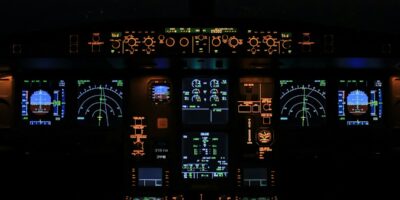Aurora Flight Sciences: Innovating Aerospace Technology
Aurora Flight Sciences is a leader in the development of advanced aerospace vehicles. They integrate complex systems that leverage cutting-edge technology. The company focuses on pioneering automatic flight systems, next-generation aircraft, and innovative propulsion methods. These initiatives aim to revolutionize modern aviation practices.
A Brief History
Aurora Flight Sciences was founded in 1989 by John S. Langford. Its roots are in research projects at MIT. Initially, the company focused on unmanned aerial vehicles (UAVs) and rapid prototyping. Over the years, it expanded into various aerospace domains. In 2017, Boeing acquired the company, enhancing its capabilities. Today, Aurora is a crucial part of Boeing’s high-tech aerospace innovations.
Unmanned Aerial Vehicles (UAVs)
The development of UAVs is a key area for Aurora. They have created a range of drones for both military and commercial use. One notable project is the Orion, which holds an endurance record for UAVs. It can fly for five days non-stop. Military applications for UAVs include reconnaissance and tactical support. For commercial use, drones can handle deliveries, surveillance, and data collection for businesses.
Innovative Propulsion Technologies
Aurora is at the forefront of developing hybrid-electric propulsion systems. These systems aim to reduce emissions and increase efficiency. The goal is to create a sustainable future for aviation. Hybrid systems combine traditional fuel engines with electric motors. This approach reduces fuel consumption and cuts greenhouse gases.
Automatic Flight Systems
Automatic flight technologies developed by Aurora are revolutionizing interaction with aircraft. They have advanced autopilot systems for both UAVs and traditional aircraft. These systems can handle complex tasks with minimal human intervention. Educational institutions use their technology in flight simulators for training pilots. It also increases the safety and reliability of air travel.
Advancements in Aircraft Design
Aurora Flight Sciences specializes in pioneering new aircraft designs. They work with materials such as composite structures to enhance durability and efficiency. Another focus is the development of Vertical Take-Off and Landing (VTOL) aircraft. These aircraft can operate in constrained environments where runways aren’t available. VTOL aircraft are expected to play a vital role in urban air mobility, making on-demand air taxis a reality.
Collaborations and Partnerships
Their alliances extend beyond Boeing. Aurora collaborates with NASA on various aeronautical projects. One significant collaboration is the X-57 Maxwell, an all-electric plane. This project is part of NASA’s initiative to demonstrate green aviation technology. Partnerships with academic institutions enable Aurora to stay ahead in research and innovation.
Urban Air Mobility Initiatives
Urban Air Mobility (UAM) is another focus area. Aurora is involved in developing advanced air mobility systems for urban environments. This includes the creation of prototypes for personal air vehicles. Working on scalable traffic management systems is essential for integrating these vehicles into urban infrastructure. Safety, sustainability, and efficiency are key considerations in UAM projects.
Research and Development Focus
Aurora continually invests in R&D to push the boundaries of aerospace technology. It’s critical for maintaining a competitive edge. Their research covers aerodynamics, propulsion, automation, and avionics. Prototyping is part of their DNA, enabling rapid innovation cycles. This culture of learning and exploration drives technological advances.
The Role within Boeing
As part of Boeing, Aurora provides critical technology that’s integrated into larger aircraft systems. Boeing relies on them for expertise in autonomy and advanced systems. Their contributions are pivotal for Boeing’s future aircraft designs. Together, they aim to fulfill aviation demands of the future with sustainable and efficient solutions.
“`
Recommended Aviation Gear
David Clark H10-13.4 Aviation Headset – $376.95
The industry standard for aviation headsets, trusted by pilots worldwide.
Pilot’s Handbook of Aeronautical Knowledge – $25.42
The official FAA handbook – essential reading for every pilot.
As an Amazon Associate, we earn from qualifying purchases.



Subscribe for Updates
Get the latest articles delivered to your inbox.
We respect your privacy. Unsubscribe anytime.